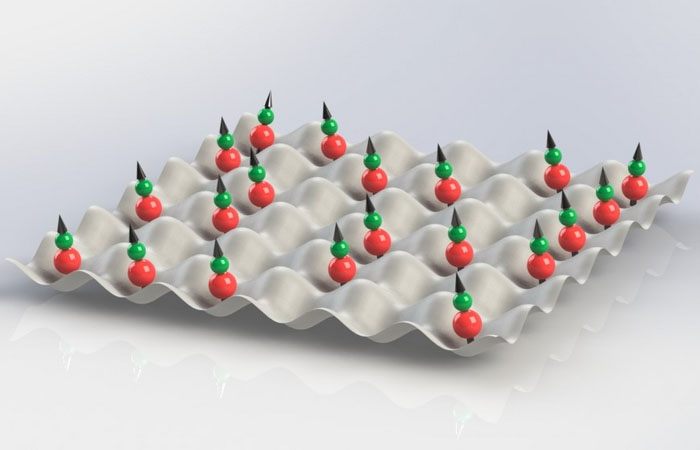Feb 01, 2023 (Nanowerk News) What happened shortly after the universe was born in the Big Bang and began to expand? Bubbles occurred and a previously unknown phase transition happened, according to particle physicists. Think of bringing a pot of water to the boil: As the temperature reaches the boiling...
Physicists observe rare resonance in molecules for the first time
Feb 01, 2023 (Nanowerk News) If she hits just the right pitch, a singer can shatter a wine glass. The reason is resonance. While the glass may vibrate slightly in response to most acoustic tones, a pitch that resonates with the material’s own natural frequency can send its vibrations into...
Researchers reveal microscopic quantum correlations of ultracold molecules
Feb 01, 2023 (Nanowerk News) Physicists are increasingly using ultracold molecules to study quantum states of matter. Many researchers contend that molecules have advantages over other alternatives, such as trapped ions, atoms or photons. These advantages suggest that molecular systems will play important roles in emerging quantum technologies. But, for...
Engineers invent vertical, full-color microscopic LEDs
Feb 01, 2023 (Nanowerk News) Take apart your laptop screen, and at its heart you’ll find a plate patterned with pixels of red, green, and blue LEDs, arranged end to end like a meticulous Lite Brite display. When electrically powered, the LEDs together can produce every shade in the rainbow...
Using CRISPR to detect cancer biomarkers
Feb 01, 2023 (Nanowerk News) Most cancer diagnostic techniques rely on uncomfortable and invasive procedures, such as biopsies, endoscopies or mammograms. Blood samples could be a less unpleasant option, though only a few forms of the disease can currently be diagnosed this way. But now, researchers reporting in ACS Sensors...
Seawater split to produce green hydrogen
Feb 01, 2023 (Nanowerk News) Researchers have successfully split seawater without pre-treatment to produce green hydrogen. The international team was led by the University of Adelaide’s Professor Shizhang Qiao and Associate Professor Yao Zheng from the School of Chemical Engineering. “We have split natural seawater into oxygen and hydrogen with...
Silver nanoparticles show promise in fighting antibiotic-resistant bacteria
Feb 01, 2023 (Nanowerk News) In a new study (Frontiers in Microbiology, "Silver nanoparticles enhance the efficacy of aminoglycosides against antibiotic-resistant bacteria"), scientists with the University of Florida found that a combination of silver nanoparticles and antibiotics was effective against antibiotic-resistant bacteria. The researchers hope to turn this discovery into...
Smart stitches could reduce infection and simplify post op monitoring
Feb 01, 2023 (Nanowerk News) A new antimicrobial suture material that glows in medical imaging could provide a promising alternative for mesh implants and internal stitches. Surgical site infections are one of the most common medical infections, occurring in 2 to 4% of patients post-surgery. For some procedures, such as...
Legged robots need more testing before real-world use
Jan 31, 2023 (Nanowerk News) When it comes to the evolution of mobile robots, it may be a long time before legged robots are able to safely interact in the real world, according to a new study. Led by a team of researchers at The Ohio State University, the study...
New catalyst that transforms carbon dioxide into high added-value chemical products
Jan 31, 2023 (Nanowerk News) Global warming is an increasingly worrying problem. Although the greenhouse effect is a necessary process to maintain living conditions on Earth, our current societies are increasing the emission of greenhouse gases into the atmosphere and increasing its temperature by retaining more heat than necessary. Nature...










